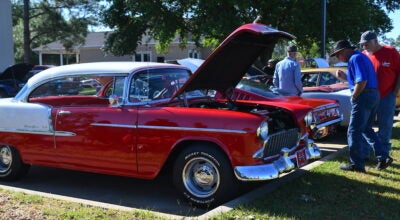Speakers ‘talk trash’ at Rotary
Published 10:17 am Tuesday, August 23, 2011
Members of the Rotary Club of Bainbridge heard a little “trash talk” at Tuesday’s club meeting.The guest speakers were Decatur County Finance Director Carl Rowland, and J. Steven Harbin, consulting engineer with Harbin Engineering of Forsyth, Ga. Rowland and Harbin talked about a rather unusual subject for the luncheon — the county’s landfills.Rowland explained that the county’s landfills, particularly the newer facility off U.S. 27 South, are a prime source of revenue for Decatur County. He said that since June 2008, the landfill has earned enough revenue that it has alowed the county to keep its millage rate a full 2.0 mills lower than it would have been otherwise.One additional advantage to the county’s landfill is that Decatur County also accepts trash from some surrounding areas, including Colquitt, Ga., Sneads, Fla., and Quincy, Fla.
“Because we’ve got other areas increasing county revenues, it helps lessen the burden on our local taxpayers,” Rowland said.Harbin, a self-titled “garbologist,” explained some of the interesting features of a modern landfill. Many landfills produce byproducts that can be used for fuels — such as methane gas. In addition, some parks have even been created from “closed” landfills.“I know it’s kind of an odd topic to discuss right after lunch, but a properly operated landfill can be a major benefit to a community,” he said.
Harbin said most landfills have a layer of clay along the bottom, and then a liner of high-density polyethlene plastic is placed above the clay. When a landfill has reached its maximum capacity — usually about 30 years after it opens — a similar liner is placed on top and then soil is added to allow the upper layer to resume vegetation.Harbin said one park in Virginia Beach, Va., is even known as “Mount Trashmore” because it is created from a closed landfill.He said plans are underway to increase the number of “cells” at the Decatur County site to increase capacity another 30 years. This increase can be done without adding additional land to the landfill’s surface area. He also said that discussions are underway with neighboring landowners about a possible land sale that could be annexed to the existing site and add another 50 to 75 years of capacity.
Harbin jokingly noted that landfills are not always the most popular use of the land, but he has heard from several Decatur County residents who live near the current facility and do not have many problems with it.“We’ve been told they can’t hear it, they can’t see it, and they can’t smell it,” he said. “I have to commend your people for running a very good landfill.” For more information about the Decaur County Landfill, located just off Mile Marker 3 on Tallahassee Highway (U. S. 27 South), call (229) 246-4341, or visit online at www.decaturcountyga.org/landfill.php.





